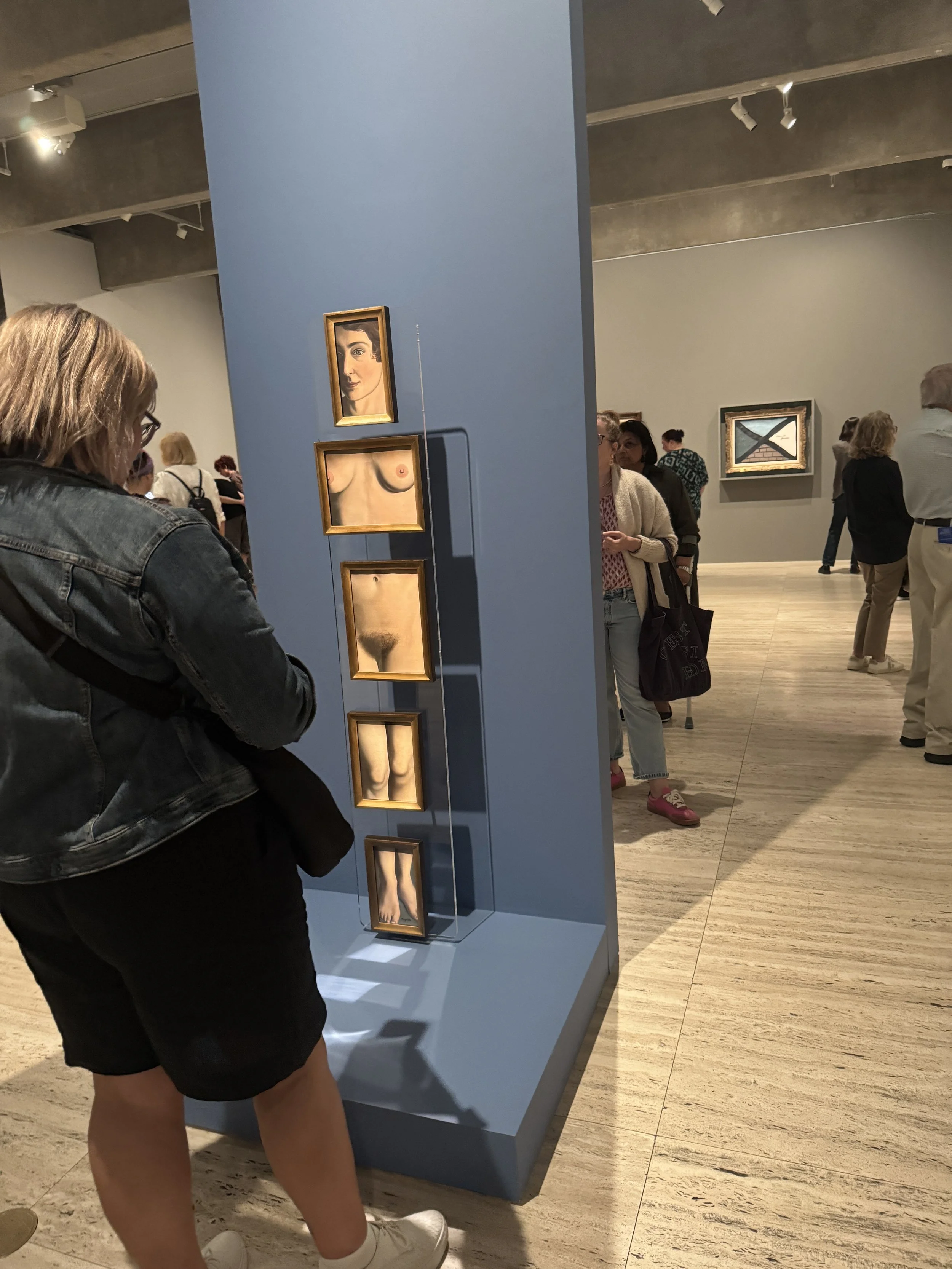magritte | Art Gallery of New south wales
The Art Gallery of New South Wales presents Magritte, Australia’s first retrospective of the lauded Surrealist. Featuring more than one hundred of René Magritte’s paintings, this exhibition is an all encompassing and bold endeavor to represent the oeuvre of such a recognizable artist. Beginning with his avant-garde explorations and commercial works in the 1920s, to his groundbreaking contributions to surrealism, his surprising provocations of the 1940s, and the renowned paintings of his final years, before his death in 1967. His most iconic imagery: the cloud motif, mirrors, and the famous bowler hat all make an appearance.
The overall feeling, while slowly making your way through this exhibition, is well, quite surreal. The volume of work, the different colored gallery walls, and the busy hang, all contribute to the feeling of being enrobed by a dripping mass of bright blue sky and clouds. Magritte’s sense of humor is also on display, bending and contorting noses into smoking pipes, and a Cyclopean cartoon figure surprised by its own Pinocchian nose.
The issue with this exhibition, however, is the same dilemma that plagues much of the art world in Australia. It is just slightly behind the times, not quite up to speed with the rest of the world. Like his contemporaries, Magritte often portrays the female body in parts, rather than as a whole. He splices and fragments the female form, as if a synecdochic illustration satisfies the essence of the whole. Without homogeneity, the body is flesh - meat and bones, and nothing else. Especially striking, is a grouping of five framed canvases stacked on top of one another that when viewed together create the image of the woman. Split a part and diced into five pieces and then placed behind the bars of the canvas frames, the image is disturbingly violent.
To clarify, I do not blame the museum for its interest in exhibiting works by the artist that commit violence against women. I blame the institution for its lack of interest in educating its visitors in not only the global historical context but in the context of art history and social critique. The exhibition was meant to be an acquisitional triumph for the Art Gallery of New South Wales, and it is. Unfortunately, it is not enough to exhibit a large group of work. Curation and stewardship necessitates a responsibility to educate the visitor not only of the good but of the bad as well.
